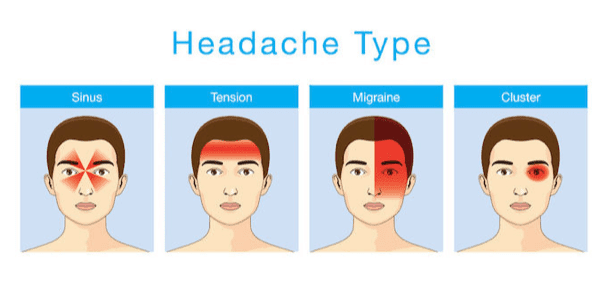
Headaches are common and can be a debilitating source of pain. An Australian study[1] in 2017 found that 87% of people had suffered from headaches in the preceding year and 16% had suffered from migraines in the same period. Symptoms of headache can include pain and/or feelings of tension or pressure in the head. They can be accompanied by sensitivity to light and sound, vision changes or tenderness in the head and neck region.
Types of headaches can include:
- Tension headaches
- Cervicogenic (neck related) headaches
- Migraine
- Sinus headaches
- Cluster headaches
- Menstrual migraine/hormonal headaches

It is recommended that you see your doctor if you are experiencing headaches or neck pain, or have experienced head trauma prior to commencement of physiotherapy. Following medical clearance, your physiotherapist can assist in the treatment of headaches. Treatment may include:
- Soft tissue release/massage in the neck, shoulders or upper back
- Joint mobilisation of the cervical spine and thoracic spine
- Education and advice regarding headache symptom management and modification
- Mobility and stretching exercises for the neck, shoulders and upper back
- Strengthening exercises for the neck, muscles of the upper back and shoulders
- Postural retraining and ergonomic advice
Physiotherapy can be a safe and effective method of treating of headaches, with evidence demonstrating improved quality of life and reduced pain levels in patients following treatment[2].
[1] Prevalence of headache and migraine in an Australian city- J. Heywood, T. Colgan, and C. Coffey- Journal of Clinical Neuroscience (1998) 5(4), 485.
[2] Espí-López GV, Arnal-Gómez A, Arbós-Berenguer T, González ÁA, Vicente-Herrero
T. Effectiveness of Physical Therapy in Patients with Tension-type Headache: Literature Review. J Jpn Phys Ther Assoc. 2014;17(1):31–38. doi:10.1298/jjpta.17.31
 Helping the Central Coast Feel Well, Move Well and Perform Well!
Helping the Central Coast Feel Well, Move Well and Perform Well!